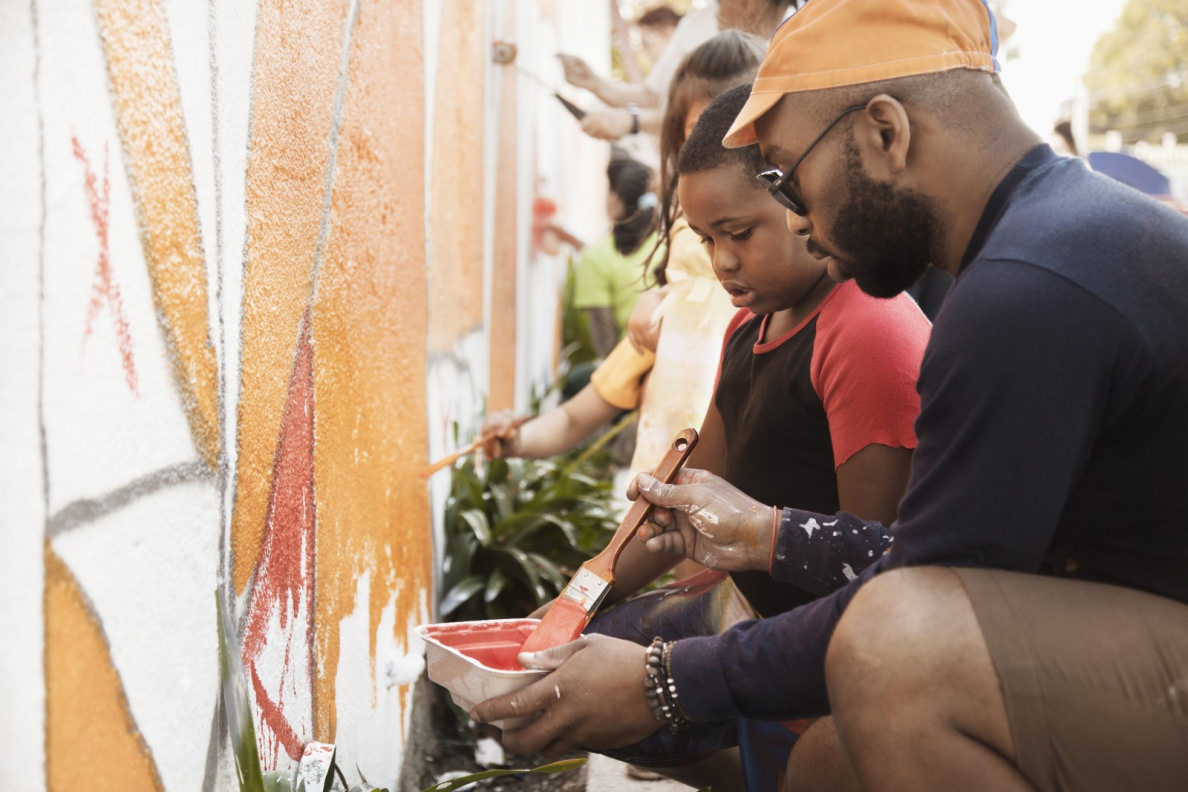
How much can you afford?
Once you determine you’re ready to be a homeowner and in a financial position to buy a home, you can figure out how much you can afford to spend on a house.


Where you live matters. And nationwide, communities of color generally have worse access to several key neighborhood amenities — including traditional finance outlets, health and fitness services — than largely white communities. The disparities reflect the ongoing challenge of ensuring equal opportunity across racial lines when access to the basic building blocks of those opportunities remains exceptionally unequal.
Using business data from Yelp, Zillow analyzed the relationship between the racial composition of Census tracts and the density of amenities within five business categories: traditional finance, alternative finance, fitness, health services and healthy food categories. This analysis focused on the ten metros identified by the National Fair Housing Alliance’s Keys Unlock Dreams Initiative: Atlanta, Baltimore, Columbus, Detroit, Houston, Memphis, New Orleans, Oakland, Philadelphia and Washington, D.C.
Echoing our previous research on this topic, we found that majority-white areas have more traditional finance outlets (banks, credit unions and mortgage lenders), more fitness and health services and fewer alternative finance establishments (check-cashing, payday lenders, pawn shops etc). Across the ten metros and the business categories analyzed, Baltimore, Detroit, Oakland, and Philadelphia in particular had some of the widest gaps in access between their majority-white and majority-nonwhite neighborhoods. But the pattern of inequity is abundantly clear across all ten markets, to the detriment of communities of color.
The only category analyzed in which communities of color were not seemingly disadvantaged relative to white communities was in access to healthy food — but even there, the results are somewhat deceiving. There are more opportunities for healthy food options in non-white communities, but that is largely because of a higher density of smaller businesses: Think small fruit stands, bodegas and neighborhood butchers in largely urban areas, not Whole Foods, Giant, or Trader Joes that are more likely to be located in lower-density areas. Moreover, these smaller urban food stores may very likely sell healthy foods, but potentially at higher prices that may make them inaccessible to residents. Finally, these stores may also include small businesses that do not necessarily sell healthy foods, but only have the potential for doing so.
Across all metros analyzed, access to traditional financial institutions is significantly worse in largely Black and Latinx neighborhoods than it is in predominantly white enclaves. Majority-Black neighborhoods have between 39% and 89% fewer traditional finance institutions than majority-white neighborhoods in the ten areas analyzed (of areas with statistically significant differences in business densities); majority-Latinx neighborhoods between 65% and 88% fewer, on average. In Oakland — where majority-Latinx and majority-Black neighborhoods have the largest gap with majority-white neighborhoods regarding access to traditional finance among the markets analyzed — there are 7.8 traditional finance businesses for every 10,000 residents in predominantly white areas. There are only 0.9 per 10,000 residents and 1 per 10,000 residents in Oakland’s majority Latinx and Black communities, respectively — almost 90% lower, in both cases, than in white communities
Interestingly, access to traditional finance in majority-Asian areas was not significantly different from majority-white areas in any of the ten metros studied except Washington, D.C., where majority-Asian tracts have 74% fewer traditional banking establishments. But these findings for Asian communities in particular are, generally, probably best portrayed as inconclusive rather than broadly positive.The findings for Asian communities in these metros, such as they are, can largely be attributed to small Asian populations in these areas overall — and there simply aren’t any majority-Asian census tracts in Baltimore, Columbus, Memphis or New Orleans.
Perhaps because of the relative dearth of traditional finance business in these communities, the prevalence of alternative financiers — generally seen as riskier and/or more predatory kinds of businesses — is much higher in Black and Latinx neighborhoods. Baltimore has the largest disparity — there are almost 2.3 times more alternative finance businesses in Baltimore’s majority-Black areas than its majority-white areas. Similarly, in Philadelphia, majority-Latinx areas have 2.3 times more alternative banking establishments.
The lack of traditional finance institutions in Black and Latinx neighborhoods nationwide often leaves would-be borrowers no choice but to seek credit from these alternate lenders. These businesses often charge exorbitant interest rates or impose onerous repayment terms that put borrowers at a disadvantage from the start and contribute to defaults, poor credit scores and other debilitating outcomes. It makes some sense, then, that even in the presence of traditional finance institutions, the higher rate of credit insecurity among Black and Latinx Americans means they are denied mortgages at a higher rate by the country’s largest lending institutions. It also makes sense that consumers of color are more likely to be credit invisible than their white counterparts.
Among metros with large disparities in fitness amenities between white and non-white areas, Latinx neighborhoods fare particularly poorly, though access to fitness amenities and outdoor activities including parks and recreation centers is also lacking in majority-Black areas.
The disparity in the prevalence of fitness amenities in white and nonwhite areas is largest in Philadelphia, where majority-Latinx neighborhoods have 90% fewer fitness and outdoor amenities than white neighborhoods. Oakland is a close second, with 80% fewer of these amenities in majority-Latinx neighborhoods. Majority-Latinx areas in Detroit and D.C. have 75% and 76% fewer fitness amenities than white areas, respectively. For Black communities, the disparity is also largest in Philadelphia and Baltimore — in both, there are 75% fewer fitness amenities in majority Black neighborhoods compared to majority white neighborhoods. Black residents in Houston, Oakland, and Memphis fare similarly, with between 66% and 71% fewer fitness amenities than white neighborhoods.
Of course, being well enough to engage in fitness activities in the first place means residents also need access to basic health services — doctors’ offices, hospitals and pharmacies. And here, too, the gulf between white communities and communities of color is exceptionally wide. There are 93% less health service businesses in both Detroit and Oakland’s Latinx communities than in their white neighborhoods. And not for nothing, Oakland’s majority white communities contain the highest density of health services across all ten metros analyzed — 19.9 per 10,000 residents, more than double the national average of 8.6 per 10,000 people. The Covid-19 pandemic has underscored the vital importance of proximity to healthcare. Communities of color, with less access to health services, are bearing the brunt of the pandemic’s impact. People of color are contracting the coronavirus at higher rates, experiencing higher instances of mortality from the virus, and lower levels of vaccination.
Healthy food, including local grocers, farmers’ markets and specialty food shops like gourmet markets, is the only amenity among the five categories studied which might reveal some promise in terms of diminishing inequities between white communities and communities of color. In fact, in many of these metros, majority-nonwhite areas appear to have markedly better access to healthy food. In particular, majority-Latinx and Black areas of Philadelphia have 144% and 61% more healthy food businesses, respectively, than majority-white areas. However, this density of food businesses in majority non-white areas is likely a reflection of the higher concentrations of Latinx and Black populations in the more urban areas of these metros, where healthy food businesses tend to be smaller and/or more specialized than in whiter suburbs.
Yelp business categories were defined as follows:
Yelp provided data on businesses with their business category and Census tract.
The data contains businesses active from January 2015 through January 2021.
We used 2019 5-Year ACS data on population by race at the census tract level, to classify tracts as majority-white or majority-nonwhite. White, Black, and Asian populations only include non-Hispanic or Latino populations. Latinx populations include Hispanic populations of any race.
We performed weighted t-tests (weighting by tract population) to compare weighted means across majority-white and majority-nonwhite tracts. Only comparisons with a p-value of less than 0.005 were considered, and where both comparison groups have more than one Census tract. A relatively low p-value was used due to the number of metro-race-business comparisons made. Many metros do not have valid comparisons across all races/business types.